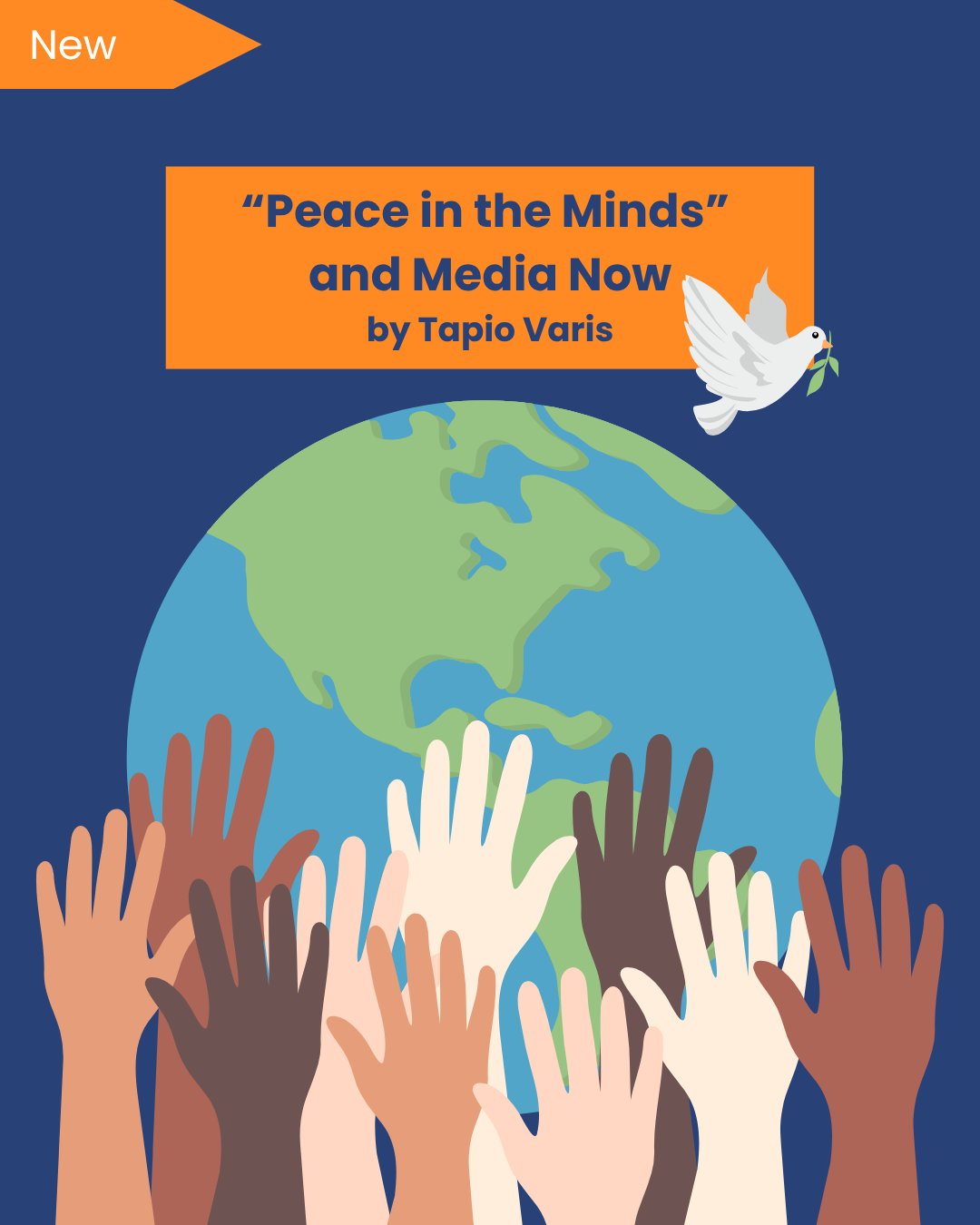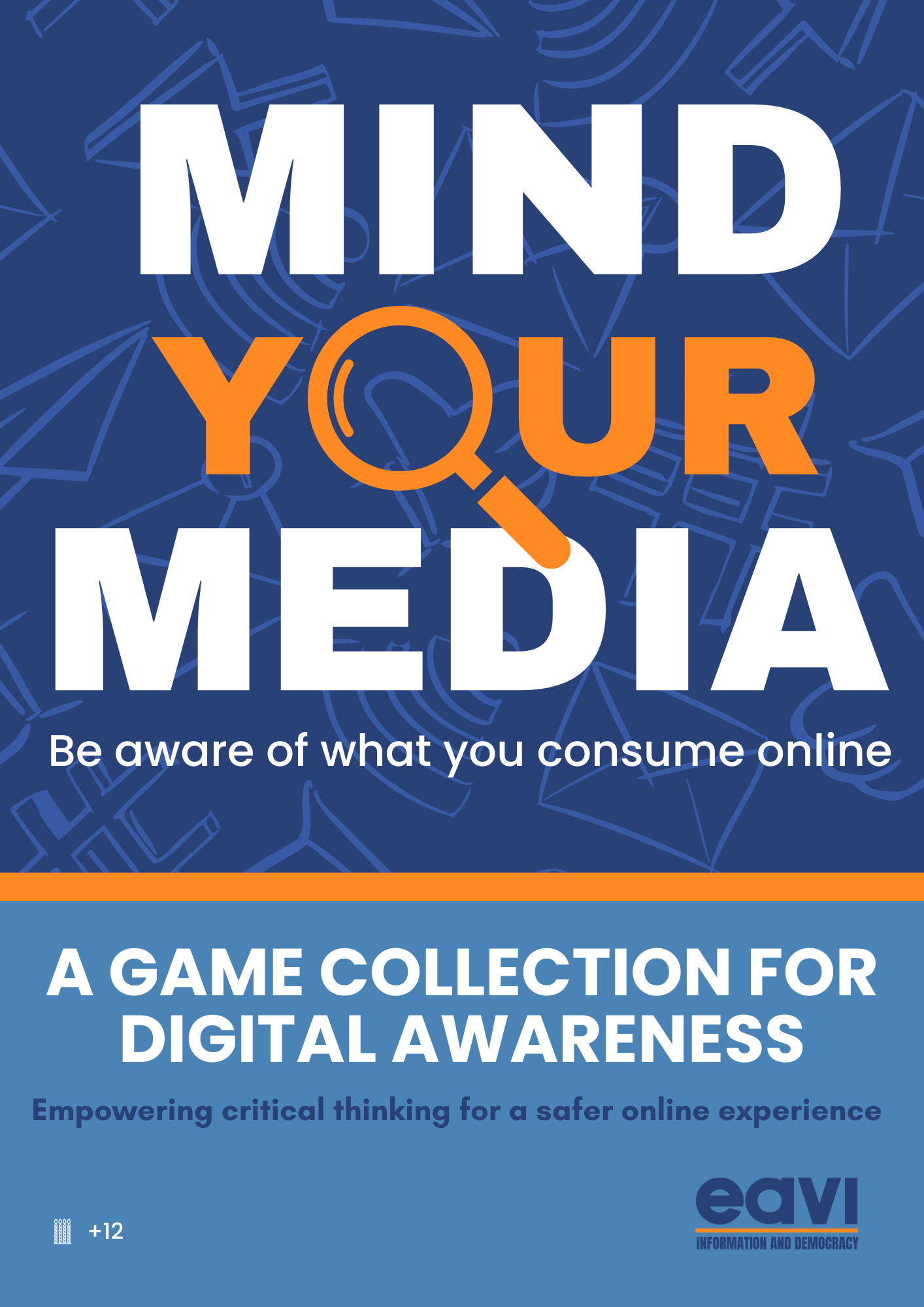The following article was written by Sarah Stoeckl, senior project manager in the ISTE Standards Department. She worked as a writing and literature teacher before becoming an administrator, writer and project wrangler.
A student shares his email password with a friend, who shares it with another friend, who sends an inappropriate picture to everyone in the students’ contacts list. It was a joke! But that doesn’t mean there won’t be repercussions. Who failed to teach these kids password safety and email etiquette?
Another student wants to fund a film project that combines digital art with music. She sets up a secure crowd-funding site account and creates unique vignettes of artistic digital music videos for each of her funders. Who taught this student to leverage digital tools to create and fund her art?
The answers to these two questions is more complicated than we may think.
Project Tomorrow recently published a blog post featuring data from its annual Speak Up! survey. The feedback — from administrators, parents, teachers, and students — shows a couple of interesting things.
First, there is the gap between what educators think they’re teaching, what students report they are learning, and what parents and administrators say should be taught. For example, in the category of “understanding what are appropriate and inappropriate digital behaviors” only around 50 percent of students say they have been taught what those digital behaviors are, while 59 percent of teachers say they are teaching this information and more than 75 percent of parents and administrators say this topic should be taught.
The second gap centers on who these stakeholders believe should be primarily responsible for teaching students digital citizenship skills. Parents say they have a lot of the responsibility and many of their children agree. But everyone thinks that classroom teachers should also carry this responsibility. (A large majority of the adults feel that students should not be learning on their own; unsurprisingly, students were more sanguine about their own abilities.)
Clearly there is a disconnect between what students and educators think when it comes to digital citizenship, despite the prominent place it holds in the minds of most educators, administrators and parents.
It’s a rift that needs to be addressed, says LeeAnn Lindsey, an education consultant and a former teacher preparation educator from Phoenix.
“Teachers may think they’re teaching it, or they are teaching it, but it doesn’t align to what students think they need,” she says. “As a field, we need to get parties on the same page so there is consistency in message from home and school, and there is momentum moving in the same direction.”
Julie Paddock, a technology coach from Poulsbo, Washington, agrees that all stakeholders — students included — need to be on board with what digital citizenship entails.
“As far as the data, I think this proves that digital citizenship has to be a group effort. All parties need to be on the same page. When you say digital citizenship whether at the district level, school level or individual level, it has to mean the same thing,” she says. “You need to accomplish this by deliberate teaching and coaching. Students need this but so do staff and administrators.”
This perspective circumvents the “who specifically should be responsible” question and pre-supposes that all parties be invested in digital citizenship, not only for the students but the entire community.
With the release of updated ISTE Standards for Students in 2016, ISTE has been emphasizing that digital citizenship and the education around it should not be strictly protective but also proactive, emphasizing the “rights, responsibilities and opportunities of living, learning and working in an interconnected digital world.” The Speak Up! data show that most stakeholders are still thinking primarily in the “protective” mode.
Digital citizenship is also often taught as a topic separate from content, communal and social-emotional learning. But if technology is used throughout a student’s day — both in school and at home — digital citizenship learning should be likewise infused.
Making the switch so that learning is designed with digital citizenship’s connection to the activity in mind and so that it is called out at crucial moments in the learning process, brings real-world applicability to student understanding.
Further, adults should consider if a punitive approach to student missteps is always the best first approach. Instead, because they are learners, issues with online behavior and activity can often be transformed into learning moments.
Ultimately, if citizenship online moves from being a list of rules and regulations, and instead becomes a mindset that infuses everything students do, the likelihood that students will behave proactively and positively (as well as protectively) increases. Such a shift would move students closer to meeting another crucial ISTE Standard, the Empowered Learner, and increase their preparation for the increasingly hybrid, both online and physical, life of modern humans.
This post was published on the ISTE Blog on March 12, 2018.
ISTE inspires educators worldwide to use technology to innovate teaching and learning, accelerate good practice and solve tough problems in education.
Sarah Stoeckl is a senior project manager in the ISTE Standards Department. She worked as a writing and literature teacher before becoming an administrator, writer and project wrangler.
The following article was written by Sarah Stoeckl, senior project manager in the ISTE Standards Department. She worked as a writing and literature teacher before becoming an administrator, writer and project wrangler.
A student shares his email password with a friend, who shares it with another friend, who sends an inappropriate picture to everyone in the students’ contacts list. It was a joke! But that doesn’t mean there won’t be repercussions. Who failed to teach these kids password safety and email etiquette?
Another student wants to fund a film project that combines digital art with music. She sets up a secure crowd-funding site account and creates unique vignettes of artistic digital music videos for each of her funders. Who taught this student to leverage digital tools to create and fund her art?
The answers to these two questions is more complicated than we may think.
Project Tomorrow recently published a blog post featuring data from its annual Speak Up! survey. The feedback — from administrators, parents, teachers, and students — shows a couple of interesting things.
First, there is the gap between what educators think they’re teaching, what students report they are learning, and what parents and administrators say should be taught. For example, in the category of “understanding what are appropriate and inappropriate digital behaviors” only around 50 percent of students say they have been taught what those digital behaviors are, while 59 percent of teachers say they are teaching this information and more than 75 percent of parents and administrators say this topic should be taught.
The second gap centers on who these stakeholders believe should be primarily responsible for teaching students digital citizenship skills. Parents say they have a lot of the responsibility and many of their children agree. But everyone thinks that classroom teachers should also carry this responsibility. (A large majority of the adults feel that students should not be learning on their own; unsurprisingly, students were more sanguine about their own abilities.)
Clearly there is a disconnect between what students and educators think when it comes to digital citizenship, despite the prominent place it holds in the minds of most educators, administrators and parents.
It’s a rift that needs to be addressed, says LeeAnn Lindsey, an education consultant and a former teacher preparation educator from Phoenix.
“Teachers may think they’re teaching it, or they are teaching it, but it doesn’t align to what students think they need,” she says. “As a field, we need to get parties on the same page so there is consistency in message from home and school, and there is momentum moving in the same direction.”
Julie Paddock, a technology coach from Poulsbo, Washington, agrees that all stakeholders — students included — need to be on board with what digital citizenship entails.
“As far as the data, I think this proves that digital citizenship has to be a group effort. All parties need to be on the same page. When you say digital citizenship whether at the district level, school level or individual level, it has to mean the same thing,” she says. “You need to accomplish this by deliberate teaching and coaching. Students need this but so do staff and administrators.”
This perspective circumvents the “who specifically should be responsible” question and pre-supposes that all parties be invested in digital citizenship, not only for the students but the entire community.
With the release of updated ISTE Standards for Students in 2016, ISTE has been emphasizing that digital citizenship and the education around it should not be strictly protective but also proactive, emphasizing the “rights, responsibilities and opportunities of living, learning and working in an interconnected digital world.” The Speak Up! data show that most stakeholders are still thinking primarily in the “protective” mode.
Digital citizenship is also often taught as a topic separate from content, communal and social-emotional learning. But if technology is used throughout a student’s day — both in school and at home — digital citizenship learning should be likewise infused.
Making the switch so that learning is designed with digital citizenship’s connection to the activity in mind and so that it is called out at crucial moments in the learning process, brings real-world applicability to student understanding.
Further, adults should consider if a punitive approach to student missteps is always the best first approach. Instead, because they are learners, issues with online behavior and activity can often be transformed into learning moments.
Ultimately, if citizenship online moves from being a list of rules and regulations, and instead becomes a mindset that infuses everything students do, the likelihood that students will behave proactively and positively (as well as protectively) increases. Such a shift would move students closer to meeting another crucial ISTE Standard, the Empowered Learner, and increase their preparation for the increasingly hybrid, both online and physical, life of modern humans.
This post was published on the ISTE Blog on March 12, 2018.
ISTE inspires educators worldwide to use technology to innovate teaching and learning, accelerate good practice and solve tough problems in education.
Sarah Stoeckl is a senior project manager in the ISTE Standards Department. She worked as a writing and literature teacher before becoming an administrator, writer and project wrangler.
The following article was written by Sarah Stoeckl, senior project manager in the ISTE Standards Department. She worked as a writing and literature teacher before becoming an administrator, writer and project wrangler.
A student shares his email password with a friend, who shares it with another friend, who sends an inappropriate picture to everyone in the students’ contacts list. It was a joke! But that doesn’t mean there won’t be repercussions. Who failed to teach these kids password safety and email etiquette?
Another student wants to fund a film project that combines digital art with music. She sets up a secure crowd-funding site account and creates unique vignettes of artistic digital music videos for each of her funders. Who taught this student to leverage digital tools to create and fund her art?
The answers to these two questions is more complicated than we may think.
Project Tomorrow recently published a blog post featuring data from its annual Speak Up! survey. The feedback — from administrators, parents, teachers, and students — shows a couple of interesting things.
First, there is the gap between what educators think they’re teaching, what students report they are learning, and what parents and administrators say should be taught. For example, in the category of “understanding what are appropriate and inappropriate digital behaviors” only around 50 percent of students say they have been taught what those digital behaviors are, while 59 percent of teachers say they are teaching this information and more than 75 percent of parents and administrators say this topic should be taught.
The second gap centers on who these stakeholders believe should be primarily responsible for teaching students digital citizenship skills. Parents say they have a lot of the responsibility and many of their children agree. But everyone thinks that classroom teachers should also carry this responsibility. (A large majority of the adults feel that students should not be learning on their own; unsurprisingly, students were more sanguine about their own abilities.)
Clearly there is a disconnect between what students and educators think when it comes to digital citizenship, despite the prominent place it holds in the minds of most educators, administrators and parents.
It’s a rift that needs to be addressed, says LeeAnn Lindsey, an education consultant and a former teacher preparation educator from Phoenix.
“Teachers may think they’re teaching it, or they are teaching it, but it doesn’t align to what students think they need,” she says. “As a field, we need to get parties on the same page so there is consistency in message from home and school, and there is momentum moving in the same direction.”
Julie Paddock, a technology coach from Poulsbo, Washington, agrees that all stakeholders — students included — need to be on board with what digital citizenship entails.
“As far as the data, I think this proves that digital citizenship has to be a group effort. All parties need to be on the same page. When you say digital citizenship whether at the district level, school level or individual level, it has to mean the same thing,” she says. “You need to accomplish this by deliberate teaching and coaching. Students need this but so do staff and administrators.”
This perspective circumvents the “who specifically should be responsible” question and pre-supposes that all parties be invested in digital citizenship, not only for the students but the entire community.
With the release of updated ISTE Standards for Students in 2016, ISTE has been emphasizing that digital citizenship and the education around it should not be strictly protective but also proactive, emphasizing the “rights, responsibilities and opportunities of living, learning and working in an interconnected digital world.” The Speak Up! data show that most stakeholders are still thinking primarily in the “protective” mode.
Digital citizenship is also often taught as a topic separate from content, communal and social-emotional learning. But if technology is used throughout a student’s day — both in school and at home — digital citizenship learning should be likewise infused.
Making the switch so that learning is designed with digital citizenship’s connection to the activity in mind and so that it is called out at crucial moments in the learning process, brings real-world applicability to student understanding.
Further, adults should consider if a punitive approach to student missteps is always the best first approach. Instead, because they are learners, issues with online behavior and activity can often be transformed into learning moments.
Ultimately, if citizenship online moves from being a list of rules and regulations, and instead becomes a mindset that infuses everything students do, the likelihood that students will behave proactively and positively (as well as protectively) increases. Such a shift would move students closer to meeting another crucial ISTE Standard, the Empowered Learner, and increase their preparation for the increasingly hybrid, both online and physical, life of modern humans.
This post was published on the ISTE Blog on March 12, 2018.
ISTE inspires educators worldwide to use technology to innovate teaching and learning, accelerate good practice and solve tough problems in education.
Sarah Stoeckl is a senior project manager in the ISTE Standards Department. She worked as a writing and literature teacher before becoming an administrator, writer and project wrangler.









































































































































































